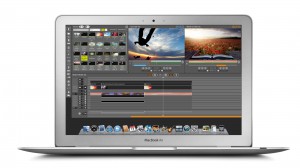SVG Europe Sit-Down: Jason Cowan, Business Development Director, Forbidden Technologies
Launched at IBC 2004 by Forbidden Technologies, Forscene’s stature in the media technology firmament has grown steadily ever since. Today, the cloud-based professional video editing software provides post production solutions to longform post, education, news and sport clients looking for increased efficiency and remote workflows.
In the midst of an “exceptionally busy” 2015, Forbidden Technologies’ business development director Jason Cowan sat down with SVG Europe to discuss the rise of cloud-based workflows, the specific opportunities of the sports market, and the recent development of an entirely virtualised sports post-production workflow with deltatre and Microsoft Azure.
How would you describe overall activity levels for Forbidden Technologies in 2015 so far compared to last year?
Forbidden has had an exceptionally busy first half of 2015. Forscene’s traditional longform business has continued from strength to strength – we support over a hundred monthly productions in the UK and we’re attracting a strong Canadian client-base through strategic partnerships. But the demand for Forscene in the sports sector has surpassed all expectations – in no small part due to exciting developments with deltatre and a long-term contract with IMG. The Forbidden team have also been busy preparing our consumer product, eva, for launch in July.
What do you think are the broader factors currently exerting the greatest influence – to good or ill – on your area of the market?
Within broadcast post/longform production tight budgets, pressure on production timelines and dispersed teams plays into the hands of a browser based, SaaS like Forscene. The pace of development in the industry is both a blessing and a curse. While we’re all keen to play with the new toys, the reality is that a lot of clients have legacy infrastructure. We spend a lot of development time making sure that Forscene seamlessly integrates with other popular technologies.
In sports digital content distribution is no longer an afterthought. Realising the potential income from digital content distribution, many sports rights’ holders now split the licencing for broadcast and digital rights content. This has created space for digitally focused companies to own the post-production and distribution of web and mobile content – and to choose products that serve this content best.
Digital rights delivery is all about speed, efficiency and price point – which play directly to Forscene’s strengths.
There has been a demand for fast turnaround sports clipping for quite some time, but clients are now looking for more advanced features that most simple clipping tools can’t provide. Forscene is uniquely positioned in that it offers both basic clip and share and advanced packaging – including lower third graphics, cross fades and voice over recording – from within the same tool.
Focusing on Forscene… to what extent do you think you have now conveyed the message about this solution to broadcasters, and particularly those in sports, or is there still much work to be done?
Forscene was successfully used on our first major sporting contract, the Summer Olympics, in 2012 so we’re relatively new to the sector.The platform is quickly becoming an integral part of sports post-production workflows, though, being used on more events in 2015 than in the previous three years combined. The ability to sub-clip, package and distribute from live incoming streams is driving Forscene’s rapid growth in sport.
In terms of sports, what are the specific benefits of deploying Forscene?
For IMG it’s about the ability to choose any feed arriving in the building, routing that to Forscene, and making that live feed available to an editor as a growing file within a browser application without occupying a traditional edit bay. Creating a package with an advanced editing tool, customising required metadata, conforming and publishing (in this case to their CDN) all within one platform. In a nutshell it’s about speed, efficiency and cost saving without compromising on production value.
Is there still resistance to cloud-based operation in sports broadcast? How how far down this ‘road’ have we come?
Four years ago, when I started working at Forbidden, the first question prospective clients asked was generally about security and reliability rather than about the efficiency and benefits of Forscene. We have mostly moved beyond this.Every broadcaster uses cloud services in some way, shape or form – just maybe not for post-production…yet. NBC using us as their ‘highlights factory’ for the 2012 Olympics certainly helped our credibility.
What can you tell us about your current R&D projects?
In June this year we partnered with deltatre and Microsoft Azure to provide the first fully virtualised service on a major sporting event. The development team are now working on a ‘hardware-free’ solution for our broadcast post clients. We’re also expanding our social media publishing network and multicam toolsets for sports editors – but you’ll have to visit us at IBC stand 8.B38e for more details.
Finally, please nominate a specific recent personal sports highlight…
I can’t remember what football game I was watching, the team or the result (possibly because of the result or possibly because of the beer!), but one moment stuck with me. It was immediately after a game-changing goal was scored and the players ran to the corner flag to celebrate with their fans. The live TV coverage could only get a shot of the players’ backs, but just about every one of the fans had a mobile phone in their hand, and most of them were filming the moment. If only there was some way for audiences at home to see what the fans were shooting. We’re working on it.


